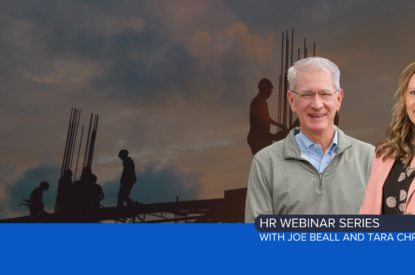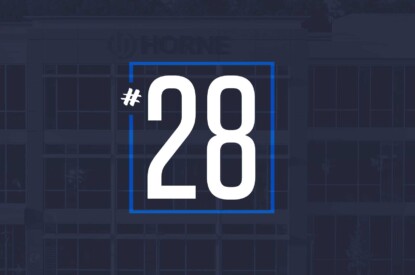As states have returned to normal Medicaid enrollment procedures in the past few months, imagine two headlines: “Medicaid Plummets!” “Marketplace Soars!” Which one is the most accurate summary? Both are, which underscores the importance of reading them together.
Four years ago, near the beginning of the COVID-19 Public Health Emergency (PHE), every state accepted an offer from the federal government to receive a 6.2 percentage point increase in its Medicaid match rate. In exchange, as provided in Section 6008 of the Families First Coronavirus Response Act (FFCRA), states would suspend their obligation under law to redetermine a person’s Medicaid eligibility at least once than every 12 months and remove those who were not eligible from the program.
States are now near the end of the PHE “unwind” and Medicaid enrollment has returned, as expected, to pre-pandemic levels. Medicaid is a “means-tested” program, so lower enrollment is also a signal of a stronger economy.
On January 24, 2024, the Centers for Medicare & Medicaid Services (CMS) used a press release, “Historic 21.3 Million People Choose ACA Marketplace Coverage” that includes the subtitle, “Marketplace enrollment climbs nearly 5 million higher than previous year.”[1] As researchers study the Medicaid PHE unwind and the historic growth in Marketplace plans, they will find millions moved from Medicaid to the Marketplace. They are also sure to discover that some individuals transitioned from Medicaid to employer coverage, while others are now uninsured (although a number could potentially reenroll in Medicaid). Utah, thus far, is the only state that has released its own survey of former Medicaid beneficiaries who were disenrolled and found that 70% signed up for employer or Marketplace coverage.[2] Some small group of individuals likely turned age 65 and began coverage through Medicare.
All of this movement illustrates how the unique American system of health insurance coverage works. Like a Rubik’s Cube, it has six sides:
- Large employer-sponsored plans, including federal, state, and local employees, primarily consisting of self-insured arrangements
- Medicaid
- Medicare
- Small employer-sponsored coverage
- Direct individual coverage, spanning Marketplace and non-Marketplace plans
- Uninsured individuals
Individuals can also be enrolled in more than one of these plans. Low-income individuals who are elderly or have a disability could be covered by both Medicaid and Medicare. Millions of Medicare enrollees purchase private supplemental insurance policies or have employer coverage as a retiree.
The PHE unwind is also an important occasion for public and private decision-makers to renew commitments to maintaining the strength and sustainability of each component. None of these components are positioned to absorb the cost and responsibilities of the others. In the 1960s, health policy analysts assumed that health care spending would never reach even 10% of GDP. Because the majority of health care spending was out-of-pocket (OOP), devoting that level of spending out of the family budget, taking away from food, housing, etc. was simply unthinkable. In 1970, out-of-pocket (OOP) spending on health care accounted for 32.7% of National Health Expenditures (NHE). Until 1977, OOP remained the largest source of spending when it was surpassed by private health insurance. In the 1960s and 1970s, economists simply could not envision the health insurance, public and private, sectors we have today.
In 1992, actuaries at the Health Care Financing Administration (HCFA) projected that health care expenditures in the year 2000 would reach $1.7 trillion, equal to 18.1% of GDP. They were pretty close to the actual amounts in 2000. But they also predicted that “by the year 2030, as America’s baby boomers enter their seventies and eighties, health spending will top $16 trillion, or 32 percent of GDP.”[3] This prediction most certainly will be wrong (thankfully).
HCFA, at the time, did not recognize that baby boomers in their 70s and 80s would be healthier than their parents’ generation. In 1940, the life expectancy of a 65-year old was less than 14 years; today it is over 20 years. They did not recognize that treatment would shift from institutions (hospitals and nursing homes) to services in the home and community, including the break-through advances in prescription drugs. They could not envision the cross-subsidies throughout each of the parts. In 2022, NHE reached $4.5 trillion ($13,493 per person) and 17.3 percent of GDP.[4] OOP accounted for 10.6% of NHE expenditures.
A major mistake of the past was underestimating the growth in the national economy. Rising health care costs were absorbed because the economy as a whole was growing. However, the greatest challenge to the economy and the sustainability of Medicare and Medicaid are demographics. In 2030, for the first time in history, there will be more people over the age of 65 than under the age of 19. In 1960, there were 5.1 workers to support one Social Security beneficiary. Today, that ratio is 2.7 and will decline to 2.3 in 2035.[5]
The largest source of long-term services and supports (LTSS) is unpaid caretakers, who are often elderly spouses or children themselves and soon to reach retirement age. Medicaid is the second source and the largest source of LTSS expenditures. Thus, even after the completion of the PHE unwind, the cost of Medicaid will once again continue to grow. Achieving sustainability will require states to manage the growth rate within the overall state budget, requiring transformative measures. Enforcing price controls won’t work in the long-run, as they often limit access, and poor quality of care is typically the most expensive over time. The next big transformations in Medicaid will center on where and how services are delivered.
[1] https://www.cms.gov/newsroom/press-releases/historic-213-million-people-choose-aca-marketplace-coverage
[2]https://californiahealthline.org/news/article/medicaid-unwinding-chip-disenrollments-halfway-through-pandemic/
[3] https://www.cms.gov/Research-Statistics-Data-and-Systems/Research/HealthCareFinancingReview/Downloads/CMS1191237dl.pdf
[4] https://www.cms.gov/data-research/statistics-trends-and-reports/national-health-expenditure-data/historical
[5] https://www.ssa.gov/news/press/factsheets/basicfact-alt.pdf




